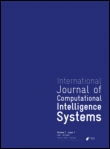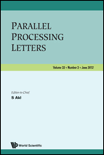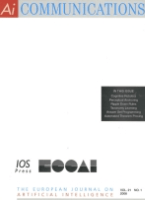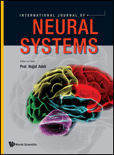
Neural Network World
Scope & Guideline
Empowering Researchers with Cutting-Edge Insights in AI and Neuroscience
Introduction
Aims and Scopes
- Neural Network Architecture Development:
Research on innovative architectures and modifications of neural networks, enhancing their performance and applicability in complex tasks. - Machine Learning Applications:
Exploration of machine learning techniques, particularly neural networks, applied to real-world problems such as medical diagnostics, transportation systems, and environmental monitoring. - Interdisciplinary Approaches:
Integration of neural networks with other disciplines, such as robotics, IoT, and bioinformatics, to leverage their capabilities in solving multifaceted challenges. - Theoretical Foundations and Algorithms:
Advancements in the theoretical understanding of neural networks, including learning algorithms, optimization techniques, and model evaluation metrics. - Data-Driven Decision Making:
Utilization of neural networks to enhance decision-making processes through data analysis, predictive modeling, and automated systems.
Trending and Emerging
- Integration of Neural Networks with IoT:
There is a rising interest in applying neural networks to Internet of Things (IoT) systems, particularly for predictive analytics and real-time decision-making. - Healthcare Applications:
An increasing number of studies focus on leveraging neural networks for healthcare applications, including diagnostics, medical imaging, and patient monitoring. - Adversarial Machine Learning:
Research on adversarial attacks and defenses in machine learning illustrates a growing concern about the security and robustness of neural network systems. - Environmental and Energy Systems:
Emerging themes include the application of neural networks in environmental monitoring and energy management, reflecting global sustainability efforts. - Multi-Modal Data Processing:
There is an increasing emphasis on utilizing neural networks to analyze multi-modal data, combining various types of information (e.g., images, text, and sensor data) for comprehensive insights.
Declining or Waning
- Traditional Statistical Methods:
There has been a noticeable decline in the use of classical statistical methods in favor of more advanced machine learning techniques, particularly deep learning. - Basic Neural Network Applications:
Research focusing solely on basic neural network applications without innovative modifications or integrations has decreased, as the field moves towards more complex and tailored solutions. - Limited Scope of Basic Image Processing:
The focus on basic image processing tasks has waned, with a shift towards more complex applications involving multi-modal data and advanced neural architectures. - One-Dimensional Data Analysis:
Studies concentrating on one-dimensional data analysis are becoming less prominent, as researchers are increasingly exploring multi-dimensional and complex datasets. - Generalized Neural Network Models:
There is a decline in papers that propose generalized neural network models without specific applications or improvements, as the field demands more specialized and effective approaches.
Similar Journals

Frontiers in Computational Neuroscience
Exploring the Complexities of Neural Networks with Cutting-Edge Methodologies.Frontiers in Computational Neuroscience, published by FRONTIERS MEDIA SA, is a leading journal within the fields of neuroscience and computational biology, dedicated to advancing the understanding of the brain's complex functions through innovative computational methodologies. Since its establishment in 2007, this Open Access journal has provided a platform for researchers around the globe to share their groundbreaking findings, as evidenced by its continual presence in the academic conversation and a strong ranking within Scopus metrics (Rank #12/49 in Neuroscience - Neuroscience (miscellaneous) and Rank #63/97 in Cellular and Molecular Neuroscience). With an esteemed impact factor reflective of its quality and influence, and a commitment to providing freely accessible research, this journal plays a crucial role in fostering collaboration and knowledge dissemination among professionals, researchers, and students alike. Located in the scientific hub of Switzerland, it invites submissions from diverse perspectives, aiming to bridge the gap between computational models and biological insights through rigorous peer-reviewed publications.

Networks and Heterogeneous Media
Connecting Ideas, Advancing ScienceNetworks and Heterogeneous Media is a distinguished journal published by the American Institute of Mathematical Sciences (AIMS), focusing on the dynamic interplay of networks across various interdisciplinary fields including applied mathematics, computer science, and engineering. With a diverse and robust scope, the journal aims to facilitate the advancement of knowledge regarding complex systems and heterogeneous media through the publication of cutting-edge research. The journal has exhibited notable academic impact, currently positioned in Q2 and Q3 quartiles across several key categories such as applied mathematics, engineering, and statistics, indicating its relevance and influence within the scientific community. Researchers and professionals exploring intricate mathematical models, computational applications, and statistical methodologies will find Networks and Heterogeneous Media an invaluable resource for both foundational studies and innovative applications. The journal regularly publishes high-quality articles, contributing to emerging discussions and developments in a rapidly evolving field.

International Journal of Computational Intelligence Systems
Catalyzing Breakthroughs in Computational Mathematics and ScienceInternational Journal of Computational Intelligence Systems, published by SPRINGERNATURE, is a leading open-access journal that has been at the forefront of research in the field of computational intelligence since 2008. With an ISSN of 1875-6891 and an E-ISSN of 1875-6883, this journal occupies a prominent place in the academic landscape, achieving impressive rankings in its categories: Q2 in both Computational Mathematics and Computer Science (miscellaneous), reflecting its significance and relevance to researchers, professionals, and students. Based in Switzerland, the journal is committed to disseminating high-quality research and fostering innovation in computational methodologies, algorithms, and applications. Its strong impact factor and Scopus rankings—31/189 in Computational Mathematics and 53/232 in General Computer Science—underscore its critical role in advancing knowledge in these interdisciplinary fields. As an open-access journal, it provides unparalleled accessibility to cutting-edge research, supporting the global community in staying at the forefront of computational intelligence advancements.

JOURNAL OF INFORMATION SCIENCE AND ENGINEERING
Empowering Research in Information and Engineering.JOURNAL OF INFORMATION SCIENCE AND ENGINEERING, published by the Institute of Information Science in Taiwan, is a pivotal platform for the dissemination of innovative research in the multidisciplinary fields of information science and engineering. Established in 1993, the journal primarily focuses on areas such as library and information sciences, human-computer interaction, hardware and architecture, as well as computational theory and software development. Despite holding a current Q4 ranking in several categories, the journal demonstrates significant potential for growth, particularly in computation and software systems, as evidenced by its Scopus rankings and percentiles. Researchers, professionals, and students will find this journal to be an invaluable resource to stay abreast of evolving theories and technologies in information science. The journal is accessible through traditional subscription models, fostering a broad academic outreach. It serves to enhance knowledge-sharing and collaboration within this dynamic and ever-evolving field.

Computational Management Science
Innovating Decision-Making with Computational ExcellenceComputational Management Science, published by SPRINGER HEIDELBERG, is a significant journal catering to the intersection of technology, management, and decision sciences. With an ISSN of 1619-697X and E-ISSN 1619-6988, this journal serves as a platform for innovative research focusing on computational methods applied to management science, operations research, and information systems. Based in Germany, the journal spans a critical period from 2005 to 2024, emphasizing trends that shape the future of the field. As a Tier 3 journal in multiple categories including Business, Management, and Accounting, and ranked across various disciplines with Scopus rankings highlighting its relevance, it stands out in fostering scholarly discourse. The journal invites contributions that enhance the application of computational techniques in decision-making, thereby enriching the practices of both academics and industry professionals. While it currently does not offer open access, its influence is reflected in its established readership and community engagement. Researchers, practitioners, and students alike will find in this journal a vital resource for advancing knowledge and sparking innovation in computational management.

NEURAL COMPUTING & APPLICATIONS
Unlocking the Potential of Neural AlgorithmsNEURAL COMPUTING & APPLICATIONS is a premier journal dedicated to the burgeoning fields of Artificial Intelligence and Software Engineering, published by Springer London Ltd. Established in 1993, the journal serves as a pivotal platform for disseminating cutting-edge research and innovative applications in neural computing, covering a broad range of topics from algorithm development to real-world applications. With its impressive categorization in the 2023 Journal Quartiles—ranging Q2 in Artificial Intelligence and Q1 in Software—it stands out in its discipline, ranking 42nd out of 407 in Computer Science Software and 50th out of 350 in Computer Science Artificial Intelligence, reflecting its significant impact in the academic community. Although not an open access journal, it provides vital access to significant findings and methodologies that drive advancements in technology. Researchers, professionals, and students looking to stay abreast of the most relevant and impactful developments in these fields will find NEURAL COMPUTING & APPLICATIONS an indispensable resource.

Parallel Processing Letters
Exploring New Dimensions in Computer Science.Parallel Processing Letters is a notable academic journal published by World Scientific Publishing Co Pte Ltd, focusing on the dynamic fields of Computer Science, particularly in Hardware and Architecture, Software, and Theoretical Computer Science. Established in 1994, this journal provides a platform for the dissemination of cutting-edge research and developments in parallel processing and computational technologies. Despite its current Q4 ranking in multiple categories, Parallel Processing Letters plays an important role in fostering scholarly discussion and innovation within the computing community. With the ISSN 0129-6264 and E-ISSN 1793-642X, the journal is dedicated to maintaining rigorous academic standards while encouraging collaborative research conducive to the advancement of parallel processing systems. It serves as a valuable resource for researchers, professionals, and students seeking to deepen their understanding and gain insights into this rapidly evolving domain.

AI COMMUNICATIONS
Bridging Research and Real-World AI Applications.AI COMMUNICATIONS is a distinguished journal published by IOS PRESS, focusing on the dynamic field of Artificial Intelligence. With a rich history dating back to 1987, this journal covers a broad spectrum of topics, including the latest advancements in AI methodologies, applications, and implications for society. Despite holding a Q3 classification in the 2023 category of Artificial Intelligence, it provides an essential platform for dialogue and dissemination of research, highlighted by its global accessibility in the realm of AI communications. Researchers, professionals, and students alike will find a wealth of knowledge within its pages, which aim to bridge the gap between cutting-edge research and practical applications in AI. By contributing to this journal, authors have the potential to engage with a diverse audience and impact the ongoing discourse surrounding artificial intelligence technologies.

Grey Systems-Theory and Application
Pioneering Research in the Realm of UncertaintyGrey Systems - Theory and Application is a premier journal dedicated to advancing the field of grey systems theory, which plays a pivotal role in addressing uncertainties in complex systems across various domains. Published by Emerald Group Publishing Ltd in the United Kingdom, this journal has established itself as a respected platform for innovative research, boasting a commendable 2023 impact factor reflected in its Q2 categorization in applied mathematics, computer science, and control systems engineering. With Scopus rankings placing it in the top tiers of its fields, it provides a robust forum for researchers, professionals, and students to explore theoretical developments and practical applications. The journal, which has been converged from 2011 to 2024, encourages open conversations on the theoretical underpinnings and real-world implications of grey systems, making it an essential resource for those looking to deepen their understanding and contribute meaningfully to this dynamic area of study.

International Journal of Neural Systems
Connecting Ideas Across Computer Science and MedicineThe International Journal of Neural Systems, published by World Scientific Publishing Co Pte Ltd, is a prestigious peer-reviewed journal dedicated to the dynamic field of neural systems research. With an ISSN of 0129-0657 and an E-ISSN of 1793-6462, this journal serves as a vital resource for researchers, professionals, and students interested in the intersections of computer science, neural networks, and communications. Noteworthy for its impact, the journal has achieved impressive rankings in 2023, positioned in the Q1 quartile for both Computer Networks and Communications as well as in the miscellaneous category of Medicine, highlighting its interdisciplinary significance and broad relevance. The journal's Scopus rank places it at #33 out of 395 in its category, reflecting its influence and reach within the academic community. While the journal is not open access, its contributions to advancing the understanding of neural systems are invaluable, offering a platform for disseminating cutting-edge research and fostering collaboration among scholars. Since its inception, the International Journal of Neural Systems remains committed to excellence and innovation in its published content, making it an essential subscription for everyone involved in this exciting and rapidly evolving field.